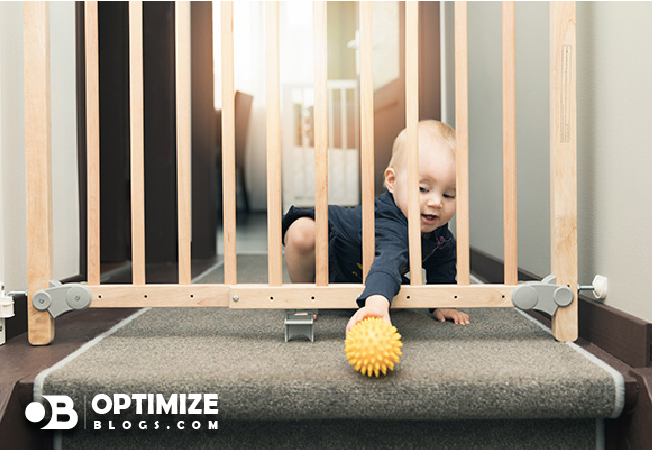
Becoming a parent is a monumental life event filled with joy, love, and new responsibilities. As you welcome your little one into your home, ensuring their safety becomes a top priority. Babies are naturally curious and eager to explore, making it essential to baby-proof your living spaces. In this comprehensive guide, we will walk you through the process of baby-proofing your home, offering safety tips and expert advice to create a secure environment for your precious bundle of joy.
Understanding Baby Safety Needs
Before diving into the specifics of baby-proofing, it's crucial to understand the developmental stages and safety needs of your baby:
Newborns (0-3 Months)
Newborns are largely immobile and primarily need a safe sleep environment.
Focus on creating a safe crib with no loose bedding, toys, or crib bumpers.
Infants (3-6 Months)
Infants start to roll over and grasp objects.
Baby-proofing should include securing heavy furniture and keeping small objects out of reach.
Crawlers (6-12 Months)
As babies start crawling, they become more curious and mobile.
Stair gates, cabinet locks, and electrical outlet covers are essential.
Toddlers (12+ Months)
Toddlers are adventurous and love to explore.
Continue using safety measures and introduce corner protectors and window locks.
Room-by-Room Baby-Proofing Checklist
The Nursery
Secure heavy furniture to the wall to prevent tipping.
Use cordless blinds or keep cords out of reach.
Install smoke and carbon monoxide detectors.
The Living Room
Cover sharp corners of furniture with corner protectors.
Secure television and entertainment center to prevent tipping.
Remove small objects that could be choking hazards.
The Kitchen
Use cabinet locks to keep cleaning supplies, sharp objects, and chemicals out of reach.
Install stove knob covers and oven locks.
Keep hot liquids and appliances away from counter edges.
The Bathroom
Install toilet seat locks.
Keep all medications and toiletries out of reach.
Use non-slip mats in the bathtub.
The Bedroom
Secure dressers and bookshelves to the wall.
Ensure blind cords are out of reach.
Use bed rails once your baby transitions to a toddler bed.
The Hallways and Stairs
Install safety gates at the top and bottom of staircases.
Use door knob covers to prevent access to certain rooms.
The Dining Room
Use highchair straps to secure your baby during meals.
Remove tablecloths to prevent your baby from pulling objects down.
Outdoors
Install fencing around the pool area.
Keep sharp gardening tools and chemicals locked away.
Use corner and edge protectors on outdoor furniture.
General Safety Tips
Anchor Heavy Furniture
Use furniture straps or brackets to anchor heavy items like dressers and bookshelves to the wall.
Electrical Outlets
Cover all electrical outlets with outlet covers or plates to prevent electrical shocks.
Window Safety
Install window locks or guards to prevent falls.
Keep blind cords out of reach or use cordless blinds.
Small Objects
Keep small objects, including toys with small parts, out of reach.
Choking Hazards
Be vigilant about potential choking hazards like coins, batteries, and small toys.
Secure Cords
Use cord organizers to keep cords for blinds, curtains, and electronics out of reach.
Bathroom Safety
Always supervise your baby during bath time.
Keep all medications and toiletries in locked cabinets.
Baby Gates
Use safety gates at the top and bottom of staircases and to restrict access to certain rooms.
Keeping Safety a Priority
Baby-proofing your home is an ongoing process that evolves as your child grows and develops new skills. Regularly assess your home for potential hazards, and adjust safety measures accordingly. While it may seem like a lot of work initially, creating a safe environment for your baby is an essential part of parenthood, ensuring their well-being and allowing them to explore their world with confidence.






